-
 Bitcoin
Bitcoin $84,293.8118
2.92% -
 Ethereum
Ethereum $1,812.6156
1.61% -
 Tether USDt
Tether USDt $0.9995
-0.01% -
 XRP
XRP $2.1300
3.96% -
 BNB
BNB $598.0731
1.81% -
 Solana
Solana $122.5476
6.46% -
 USDC
USDC $0.9999
0.00% -
 Dogecoin
Dogecoin $0.1697
6.92% -
 Cardano
Cardano $0.6614
3.58% -
 TRON
TRON $0.2399
1.67% -
 UNUS SED LEO
UNUS SED LEO $9.4721
0.87% -
 Chainlink
Chainlink $12.9918
2.93% -
 Toncoin
Toncoin $3.3918
-5.15% -
 Stellar
Stellar $0.2593
0.64% -
 Avalanche
Avalanche $18.1424
0.54% -
 Sui
Sui $2.2723
2.26% -
 Shiba Inu
Shiba Inu $0.0...01227
0.72% -
 Hedera
Hedera $0.1657
3.27% -
 Litecoin
Litecoin $84.4108
2.68% -
 Polkadot
Polkadot $4.0452
0.41% -
 MANTRA
MANTRA $6.2735
-2.26% -
 Bitcoin Cash
Bitcoin Cash $299.8507
1.71% -
 Bitget Token
Bitget Token $4.5438
1.99% -
 Dai
Dai $1.0001
0.01% -
 Ethena USDe
Ethena USDe $0.9992
-0.03% -
 Hyperliquid
Hyperliquid $11.9337
5.81% -
 Monero
Monero $215.5583
2.77% -
 Uniswap
Uniswap $5.9113
3.01% -
 Pi
Pi $0.5297
-9.83% -
 NEAR Protocol
NEAR Protocol $2.4929
1.07%
What does Rug pull mean when DeFi players say it?
Rug pulls in DeFi involve developers scamming investors by shutting down projects and taking funds, often using tactics like liquidity removal and false promises.
Apr 02, 2025 at 04:28 pm
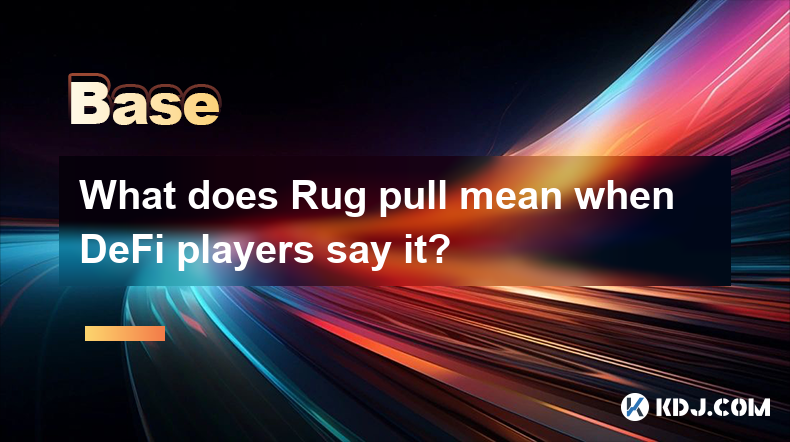
Understanding Rug Pulls in the DeFi Space
The term "rug pull" in the Decentralized Finance (DeFi) world refers to a malicious exit scam perpetrated by developers of a cryptocurrency project. Essentially, it's when developers abruptly shut down a project, taking all the invested funds with them, leaving investors with worthless tokens. This leaves users with no way to access their funds and represents a significant breach of trust within the DeFi ecosystem. The term evokes the image of someone literally pulling the rug out from under someone else, leaving them to fall.
How Rug Pulls are Executed
Rug pulls are often executed using various deceptive tactics. The developers might initially create hype around their project, promising high returns and innovative features. They may even employ marketing strategies to attract large investments. Once sufficient funds are accumulated, the developers will suddenly disappear, taking the liquidity from the project’s smart contract. This renders the tokens virtually worthless, leaving investors with significant financial losses.
- Liquidity Removal: The most common method involves removing all the liquidity from the decentralized exchange (DEX) where the token is listed. This makes it impossible to sell the tokens, effectively trapping investors.
- Admin Keys: Many DeFi projects operate using smart contracts. If developers retain control of the admin keys, they can modify the contract's code to transfer all funds to their wallets.
- Backdoors: Hidden backdoors or vulnerabilities in the smart contract code can be exploited by the developers to drain the project's funds.
- False Promises: DeFi projects often make unrealistic promises of high returns, attracting unsuspecting investors. These promises are rarely kept.
Identifying Potential Rug Pulls: Red Flags
While it's impossible to completely prevent rug pulls, investors can take steps to mitigate their risk. Recognizing certain red flags can significantly improve your chances of avoiding a scam. These warning signs often manifest before the rug pull is executed.
Anonymous Development Team: A project with an anonymous or pseudonymous development team is a significant risk factor. Lack of transparency makes it difficult to verify the team's credibility and intentions. Always prioritize projects with transparent and verifiable teams.
Unrealistic Promises: Promises of extraordinarily high returns with minimal risk should be treated with extreme skepticism. Sustainable and realistic projects usually offer modest yet steady returns.
Lack of Audits: Independent audits by reputable security firms can help identify vulnerabilities in smart contracts. Always check for evidence of third-party audits before investing.
New and Untested Projects: Newly launched projects with limited track records are inherently riskier. Prioritize projects with a proven history and established community.
Sudden Surge in Volume: A sudden and inexplicable surge in trading volume can be a sign that the developers are attempting to cash out their holdings before the rug pull. Be wary of unusual spikes in trading activity.
Lack of Community Engagement: A project with a weak or non-existent community is a red flag. Active and engaged communities are usually a good sign.
The Impact of Rug Pulls on the DeFi Ecosystem
Rug pulls have a devastating impact on the DeFi ecosystem. They erode trust in DeFi projects and discourage potential investors. The financial losses suffered by victims can be substantial, leading to a loss of confidence in the entire space. This damage to reputation can be long-lasting, hindering the growth and adoption of decentralized finance. The aftermath often involves legal challenges and investigations, but recovering funds is rarely successful.
Protecting Yourself from Rug Pulls
While completely avoiding rug pulls is difficult, several strategies can significantly reduce your risk. Diversification of your portfolio across multiple projects is crucial. Don't invest more than you can afford to lose. Thoroughly research any project before investing, examining its whitepaper, team, and community engagement. Use reputable platforms and tools to monitor the project's activity and liquidity. Always be cautious of projects promising unrealistic returns. Remember, if something seems too good to be true, it probably is.
Legal Ramifications of Rug Pulls
The legal landscape surrounding rug pulls is still evolving. Many jurisdictions lack specific regulations to address these types of scams effectively. However, depending on the jurisdiction and the specifics of the rug pull, developers could face charges related to fraud, theft, and securities violations. The difficulty in tracking down anonymous developers, however, poses a significant challenge to law enforcement.
Frequently Asked Questions
Q: What are the common signs of a rug pull?
A: Common signs include anonymous developers, unrealistic promises of high returns, lack of audits, a sudden surge in trading volume, and a lack of community engagement.
Q: Can I recover my funds after a rug pull?
A: Recovering funds after a rug pull is extremely difficult and often impossible. Law enforcement often struggles to track down anonymous developers.
Q: How can I avoid rug pulls?
A: Thorough research, diversification, and caution are key. Avoid projects with red flags and only invest what you can afford to lose.
Q: Are all DeFi projects scams?
A: No, the vast majority of DeFi projects are legitimate. However, the presence of rug pulls highlights the importance of due diligence.
Q: What is the role of smart contract audits in preventing rug pulls?
A: Smart contract audits by reputable firms can help identify vulnerabilities that could be exploited by developers to execute a rug pull. However, even audited contracts are not entirely foolproof.
Q: What actions can be taken against rug pull perpetrators?
A: Legal action can be pursued, but success is not guaranteed, especially when dealing with anonymous developers. Community pressure and reporting to relevant authorities can also play a role.
Disclaimer:info@kdj.com
The information provided is not trading advice. kdj.com does not assume any responsibility for any investments made based on the information provided in this article. Cryptocurrencies are highly volatile and it is highly recommended that you invest with caution after thorough research!
If you believe that the content used on this website infringes your copyright, please contact us immediately (info@kdj.com) and we will delete it promptly.
- Justin Sun Accuses First Digital Trust of Insolvency, Triggering Severe Depeg of the FTUSD Stablecoin
- 2025-04-05 03:20:12
- The psychology of betting: how digital assets influence player behavior in 1win
- 2025-04-05 03:20:12
- Remittix Solves Real-World Problems and Provides an Actual Solution to Crypto Payments
- 2025-04-05 03:15:12
- The Crypto Market's 2025 Bull Run Is Here
- 2025-04-05 03:15:12
- If You're Hunting for the Best Meme Coin to Buy, Now's the Time to Look Beyond the Usual Suspects
- 2025-04-05 03:10:13
- PayPal Expands Crypto Services with Solana and Chainlink
- 2025-04-05 03:10:13
Related knowledge

Why is the oracle called the bridge between blockchain and the real world?
Apr 04,2025 at 04:00am
The concept of an oracle in the cryptocurrency and blockchain world is crucial for understanding how these decentralized systems interact with external data. The oracle is often referred to as the bridge between blockchain and the real world because it serves as a vital intermediary that fetches, verifies, and transmits off-chain data to the on-chain en...

What role does the Merkle tree play in the blockchain? Why can it verify data integrity?
Apr 04,2025 at 01:29pm
The Merkle tree plays a crucial role in the blockchain, primarily due to its ability to efficiently and securely verify data integrity. This article will delve into the structure of a Merkle tree, its implementation in blockchain, and how it ensures the integrity of data. Understanding the Structure of a Merkle TreeA Merkle tree, also known as a hash tr...
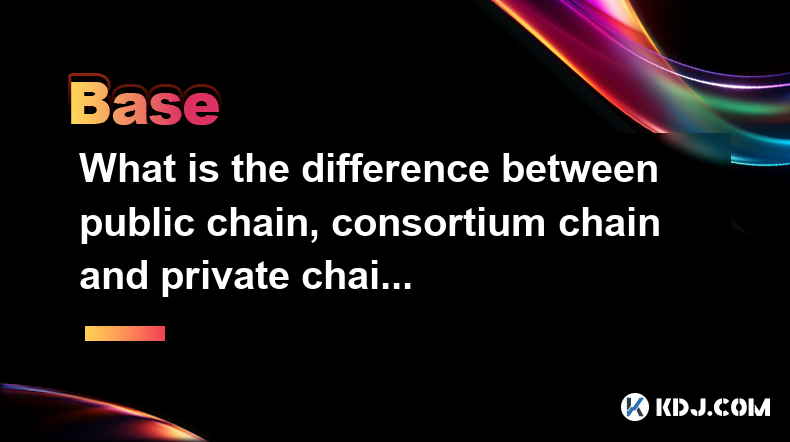
What is the difference between public chain, consortium chain and private chain? What scenarios are suitable for each?
Apr 04,2025 at 09:21pm
In the world of blockchain technology, understanding the differences between public chains, consortium chains, and private chains is crucial for selecting the right type of blockchain for specific applications. Each type of blockchain has its own unique characteristics and use cases, which we will explore in detail. Understanding Public ChainsPublic cha...
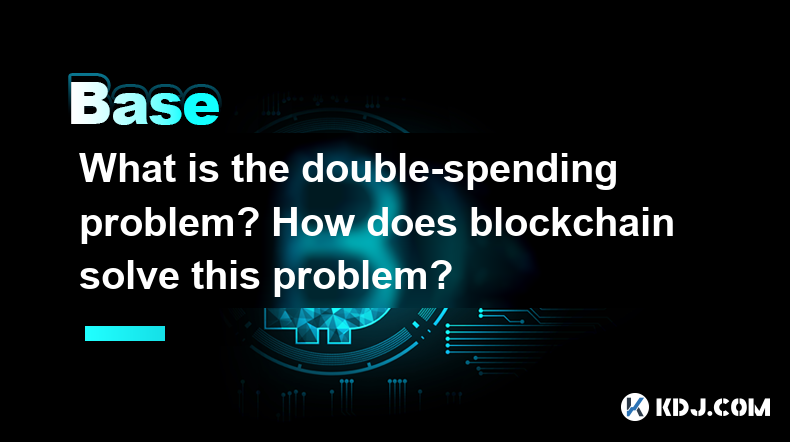
What is the double-spending problem? How does blockchain solve this problem?
Apr 04,2025 at 09:07am
The double-spending problem is a significant challenge in the realm of digital currencies. Double-spending refers to the potential for a digital currency to be spent more than once. This issue arises because digital files, unlike physical cash, can be easily duplicated. If not addressed, double-spending could undermine the integrity and trust in any dig...
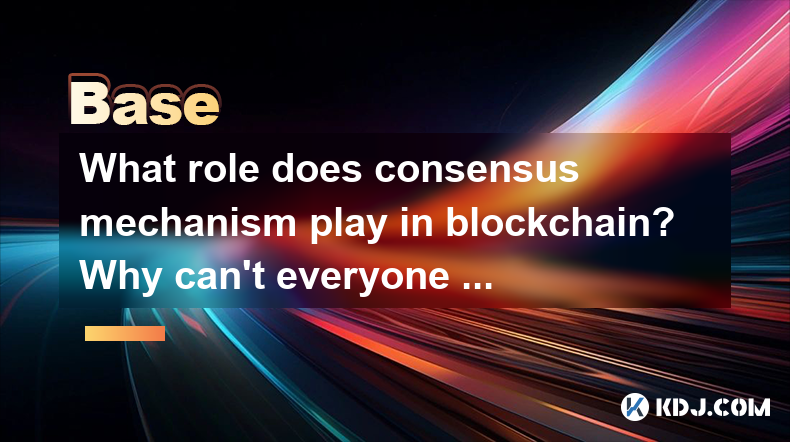
What role does consensus mechanism play in blockchain? Why can't everyone keep accounts?
Apr 05,2025 at 12:29am
The consensus mechanism is a fundamental component of blockchain technology, serving as the backbone for maintaining the integrity and security of the network. It ensures that all participants in the network agree on the state of the ledger, which is crucial for the decentralized nature of blockchain. Without a consensus mechanism, the decentralized sys...
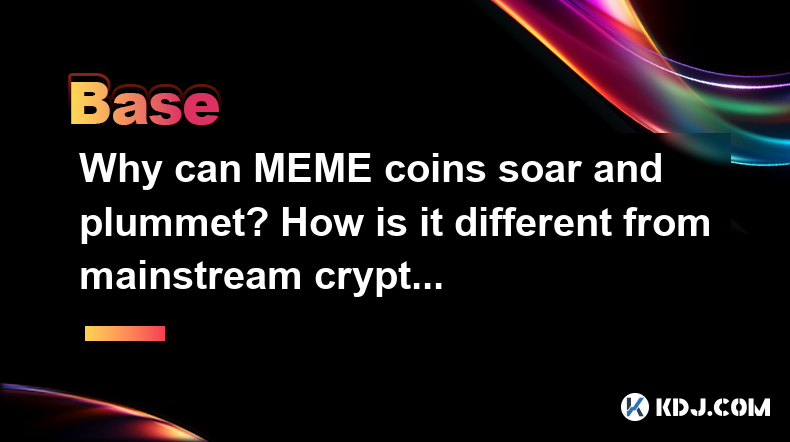
Why can MEME coins soar and plummet? How is it different from mainstream cryptocurrencies?
Apr 04,2025 at 03:07pm
The world of cryptocurrencies is vast and diverse, with a wide range of digital assets that cater to different needs and interests. Among these, MEME coins have carved out a unique niche, often experiencing dramatic price fluctuations that can both soar and plummet in a short period. This phenomenon, while intriguing, differs significantly from the beha...

Why is the oracle called the bridge between blockchain and the real world?
Apr 04,2025 at 04:00am
The concept of an oracle in the cryptocurrency and blockchain world is crucial for understanding how these decentralized systems interact with external data. The oracle is often referred to as the bridge between blockchain and the real world because it serves as a vital intermediary that fetches, verifies, and transmits off-chain data to the on-chain en...

What role does the Merkle tree play in the blockchain? Why can it verify data integrity?
Apr 04,2025 at 01:29pm
The Merkle tree plays a crucial role in the blockchain, primarily due to its ability to efficiently and securely verify data integrity. This article will delve into the structure of a Merkle tree, its implementation in blockchain, and how it ensures the integrity of data. Understanding the Structure of a Merkle TreeA Merkle tree, also known as a hash tr...

What is the difference between public chain, consortium chain and private chain? What scenarios are suitable for each?
Apr 04,2025 at 09:21pm
In the world of blockchain technology, understanding the differences between public chains, consortium chains, and private chains is crucial for selecting the right type of blockchain for specific applications. Each type of blockchain has its own unique characteristics and use cases, which we will explore in detail. Understanding Public ChainsPublic cha...

What is the double-spending problem? How does blockchain solve this problem?
Apr 04,2025 at 09:07am
The double-spending problem is a significant challenge in the realm of digital currencies. Double-spending refers to the potential for a digital currency to be spent more than once. This issue arises because digital files, unlike physical cash, can be easily duplicated. If not addressed, double-spending could undermine the integrity and trust in any dig...

What role does consensus mechanism play in blockchain? Why can't everyone keep accounts?
Apr 05,2025 at 12:29am
The consensus mechanism is a fundamental component of blockchain technology, serving as the backbone for maintaining the integrity and security of the network. It ensures that all participants in the network agree on the state of the ledger, which is crucial for the decentralized nature of blockchain. Without a consensus mechanism, the decentralized sys...

Why can MEME coins soar and plummet? How is it different from mainstream cryptocurrencies?
Apr 04,2025 at 03:07pm
The world of cryptocurrencies is vast and diverse, with a wide range of digital assets that cater to different needs and interests. Among these, MEME coins have carved out a unique niche, often experiencing dramatic price fluctuations that can both soar and plummet in a short period. This phenomenon, while intriguing, differs significantly from the beha...
See all articles





















































































